Different Types of Stucco | Information of Stucco | Types of Stucco Finishes | Stucco Maintenance

Table of Contents
Introduction of Stucco
Stucco has been a viral decorative coating for the building. In ancient times, Stucco originated from surfaces to beautiful paint.
Stucco gives an esthetic look and stylizing facades. Stucco can be used to create decorative enhancements to the exterior.
Stucco is a rougher texture compared to building plaster. In Stucco, materials can be chosen of any color and many textures. Stucco gives an excellent view. Stucco provides the appropriate insulation.
It’s s long lifespan and simple maintenance. Stucco is as a siding works which is used to reduce noise, energy-efficient, and provides great versatility.
What Is Stucco?
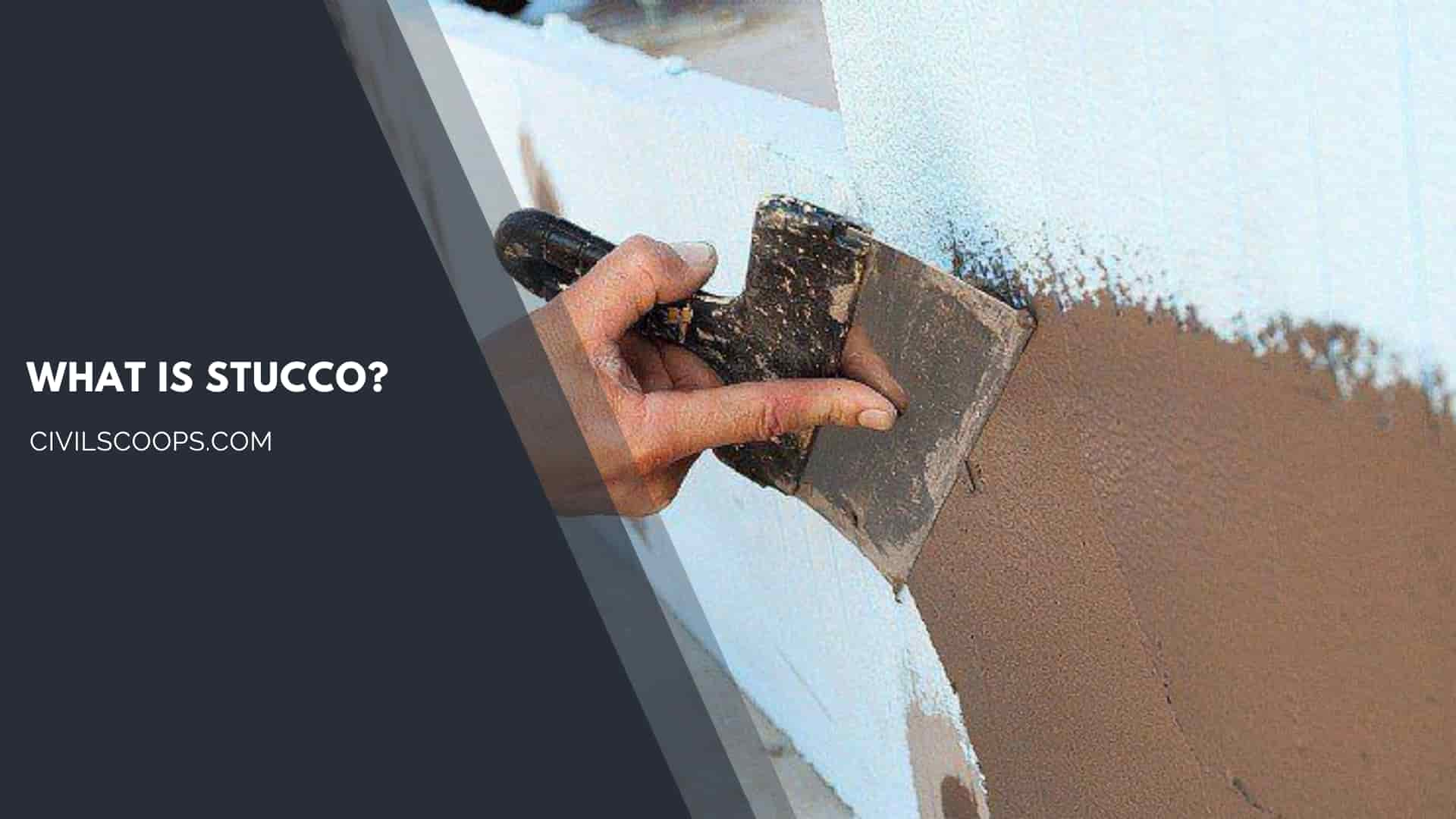
Stucco is a term similar to plaster. To coat wall surfaces, Stucco is a fine plaster used. Stucco is made up of Portland cement-based materials i.e., sand, lime, and water, to form plaster. It is used as a thin finish coat on the outermost layer of the building.
Stucco can be used as an exterior wall, ceilings, and also interior walls of the buildings. Stucco can be used in architectural decorations for exterior walls and ornamentation as interior walls of the buildings.
Different Types of Stucco
There are different kinds of Stucco, i.e., traditional Stucco and Synthetic Stucco.
1. Traditional Stucco
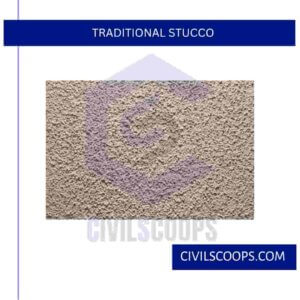
- Traditional Stucco is made up of sand, lime, and water.
- Nowadays, cement is added to Stucco. By adding cement, Stucco becomes more durable and robust.
- Sometimes, glass fibers and acrylic are added to traditional Stucco.
- Traditional Stucco is very versatile.
2. Synthetic Stucco

- Synthetic Stucco is also stood by EIFS means Exterior Insulation and Finish Systems.
- Synthetic Stucco does not use lime and cement.
- Synthetic Stucco can be used for acrylic resins. Acrylic resins are resistant to water damage, and they must be less cracking and breaking.
- Synthetic Stucco is 80% lighter than the traditional hard coat and more durable because it contains fiberglass.
- Synthetic Stucco applied by foam board.
- Synthetic Stucco is dried very fastly.
Also Read: 17 Types of Properties of Cement | Physical Properties of Cement | Chemical Properties of Cement
Useful Article for You
- What Is a Highway Flyover
- What Is Grouting
- What Is a Pile Cap
- What Is a Bond Beam in Masonry
- What Is Sapwood
- What Is Crane
- What Is a Gable
- What Is Superelevation
- What Is Kerb
- What Is the Purpose of Washers
- What Is the Size of a Brick in Inches
- What Is Reinforced Masonry
- What Is Workability
- What Is Bond Breaker
- What Is Plasticizer in Concrete
- What Is Luminous Flux Vs Lumens
- What Is Caisson
- What Is an Undercoat
- What Is a Benchmark Surveying
- What Is Bracing in Construction
- What Is a Beam in Construction
- What Is the Standard Door Frame Size
- What Is a Spandrel Beam
- What Is a Fire Escape
- What Is a Weep Hole
- What Is Tie Beam
- What Is Fine Aggregate
- What Is Pony Wall
- What Is Flag Stone
- What Is Development Length
- What Is Cement Plaster
- What Is a Pitched Roof
- What Is Rafters
- What Is a Slab in Construction
- What Is a Monolithic Slab
- What Is Linear Distance
- What Is Shovel
- What Is Lintel in Construction
- What Is a Concept Sketch
- What Is Mezzanine Floor
- What Is Man Sand
- What Is Plaster Made Out of
- What Is a Floating Slab
- What Is Falsework
Different Types of Stucco Finishes
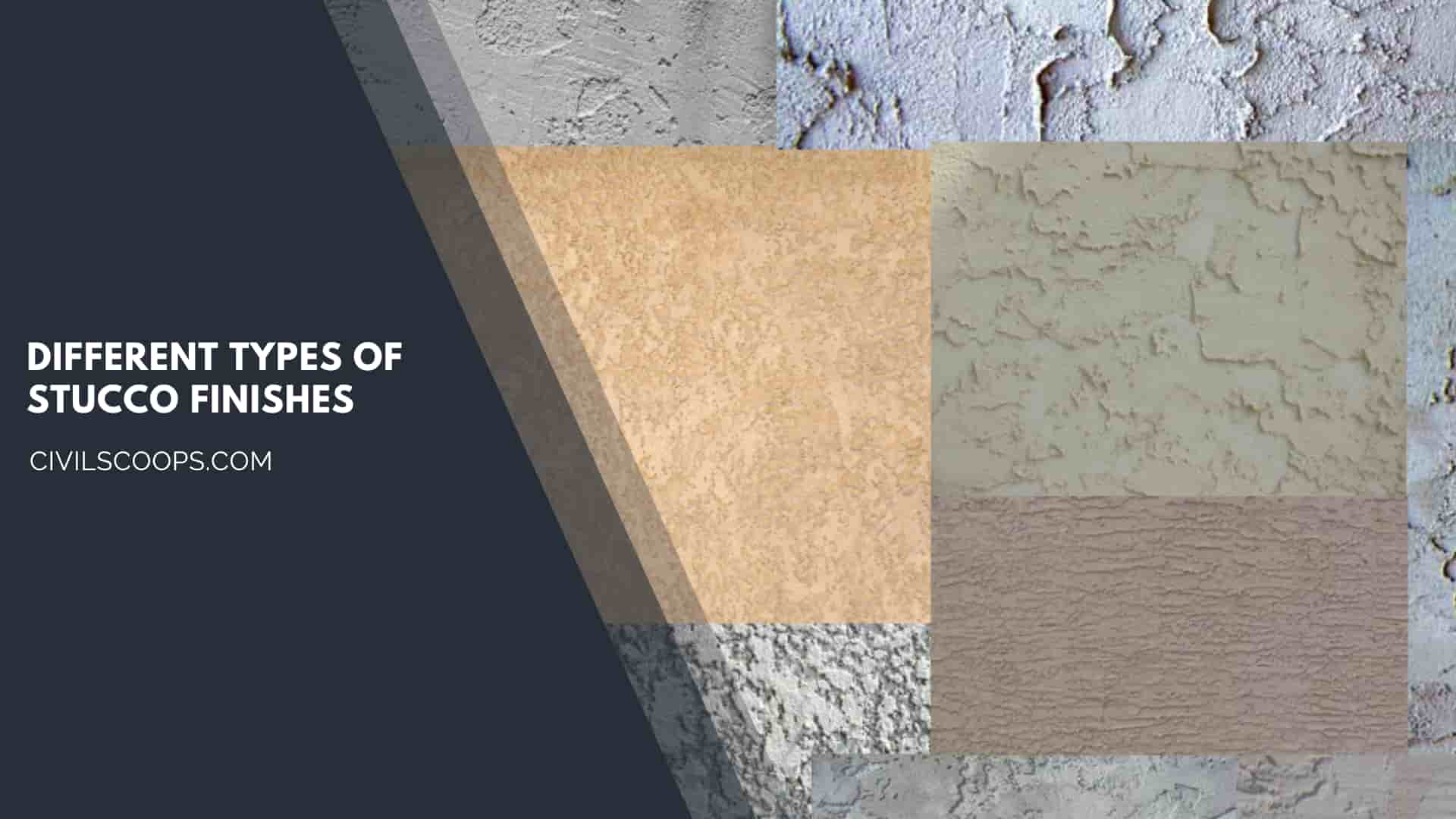
There are various types of stucco finishes.
1. Dash Finish
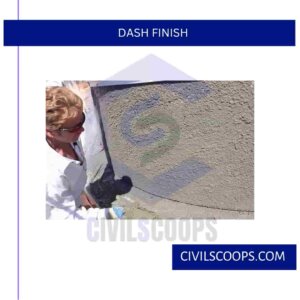
- Dash type finishes can be applied by hand or sprayed on the wall by using a small hopper gun.
- Dash finish is a unique type of finish.
- In-dash finish, three coats can be changed.
2. Cat Face Finish
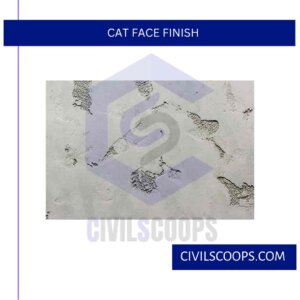
- Cat face finish is a two coats finish, i.e., smooth and rough.
- Cat face finish can be applied by troweled on or sprayed on the wall, but lastly is finished off by hand.
3. Sand or Float Finish

- Sand or float Finish texture is an essential and simple texture.
- The Sand finish is very versatile.
- The Sand finish can be fine, medium, and coarse finish.
4. Spanish Lace Finish
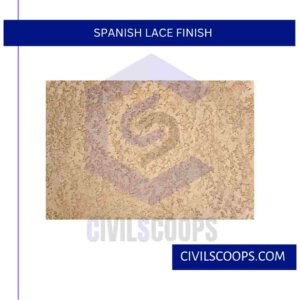
- Lace finish applied in a fine, medium, and coarse pattern.
- Lace Finish is used for either residential or commercial buildings.
5. Santa Barbara Finish

- Santa Barbara Finish is used only in traditional Stucco.
- Stucco Barbara Finish uses fine sand particles.
- In Santa Barbara Finish, colored sand can be used to create an adequate look.
6. Worm / Putz Finish
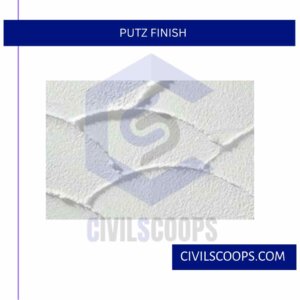
- Worm finish isn’t easy to apply.
- Worm Finish is also known as ‘putz’ and ‘swirl’ finish.
- Worm Finish can be required large pieces of aggregate in Stucco.
7. Smooth Texture Finish
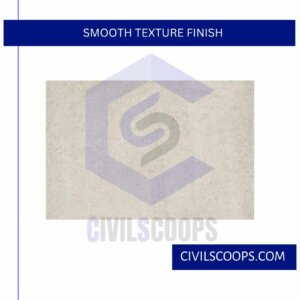
- Smooth texture Finish is the most effective and difficult texture.
- A smooth texture Finish can be provided with synthetic Stucco as well as traditional Stucco.
Also Read: 14 Types of Plaster Finishes (List of Plaster Finishing)
Stucco Maintenance
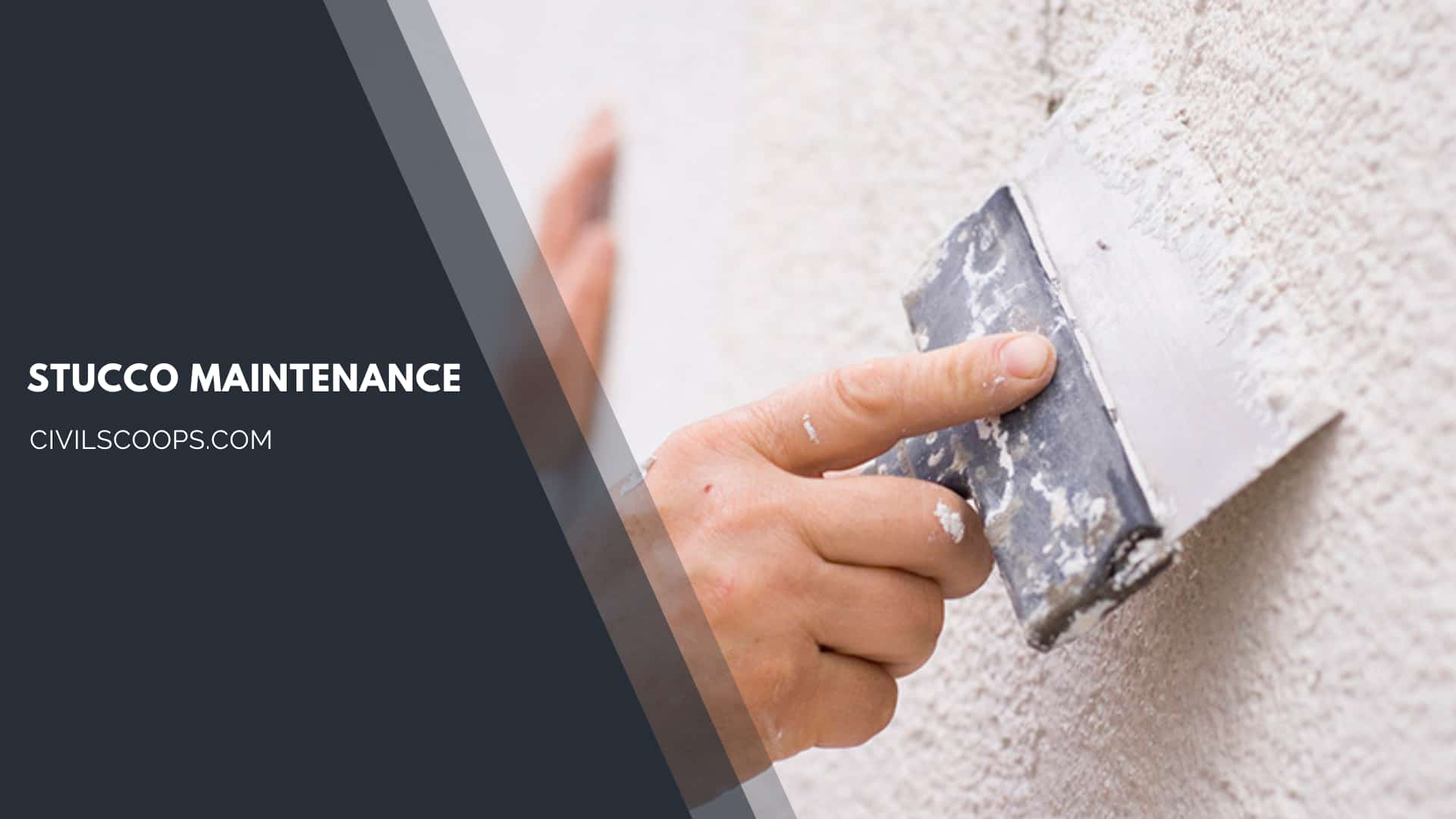
Following are the various tips for stucco maintenance.
1. Keep It Clean
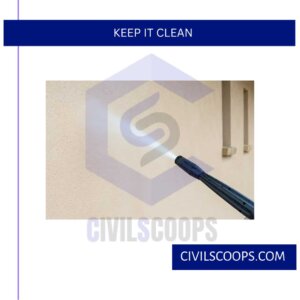
- Stucco can get dirty easily, like exterior walls.
- So, the Stucco was regularly kept clean. Outdoor sides stain easily absorbs.
2. Seal It Regularly
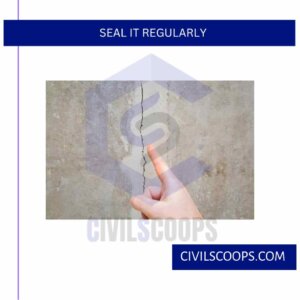
- It should be sealed when Stucco is first applied to the building.
- Stucco is a porous material; Stucco needs to be provided from the moisture.
3. Consider Applying an Elastomeric Coating
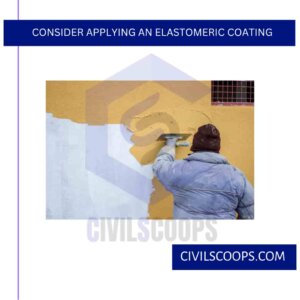
- If the building is older, an elastomeric coating is applied.
- Elastomeric coating is beneficial for destroying hairline cracks and moisture.
4. Repair Crack and Holes
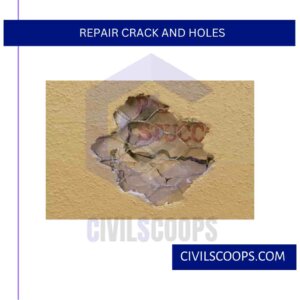
- Thermal expansion and contraction during temperature variation cracks and holes are formed.
5. Choose the Right Product
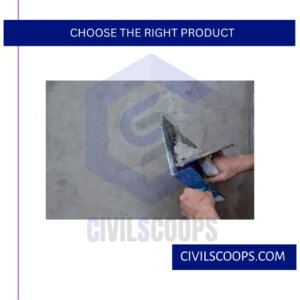
- Stucco material was used adequately. Choose the right product consulting stucco expert.
6. Prevent Stucco Paint Failure
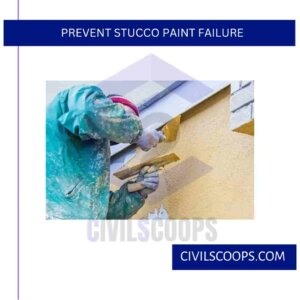
- Paint should not be applied over hot, cold, dry, damps, and dirty surfaces.
- To prevent paint failure, painters must be applying proper painting techniques.
7. Remove Mold
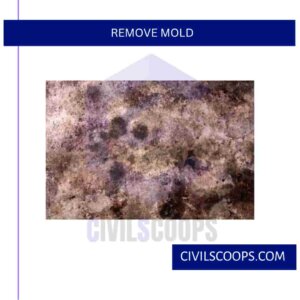
- A good shrub is needed for mold in or near the crack.
- Soft brush and sponge to apply the antimould solution.
8. Wash Wall

- To prevent dirt and dust on exterior walls.
- Warm water, mild detergent, and commercial cleaning solution are used for removing dirt and dust.
- It helps prevent the accumulation of dirt in its pores.
Also Read: What Is Paint Finishes for Walls | Types of Paint Finishes | Types of Paint Finishing
Stucco Inspection Cost
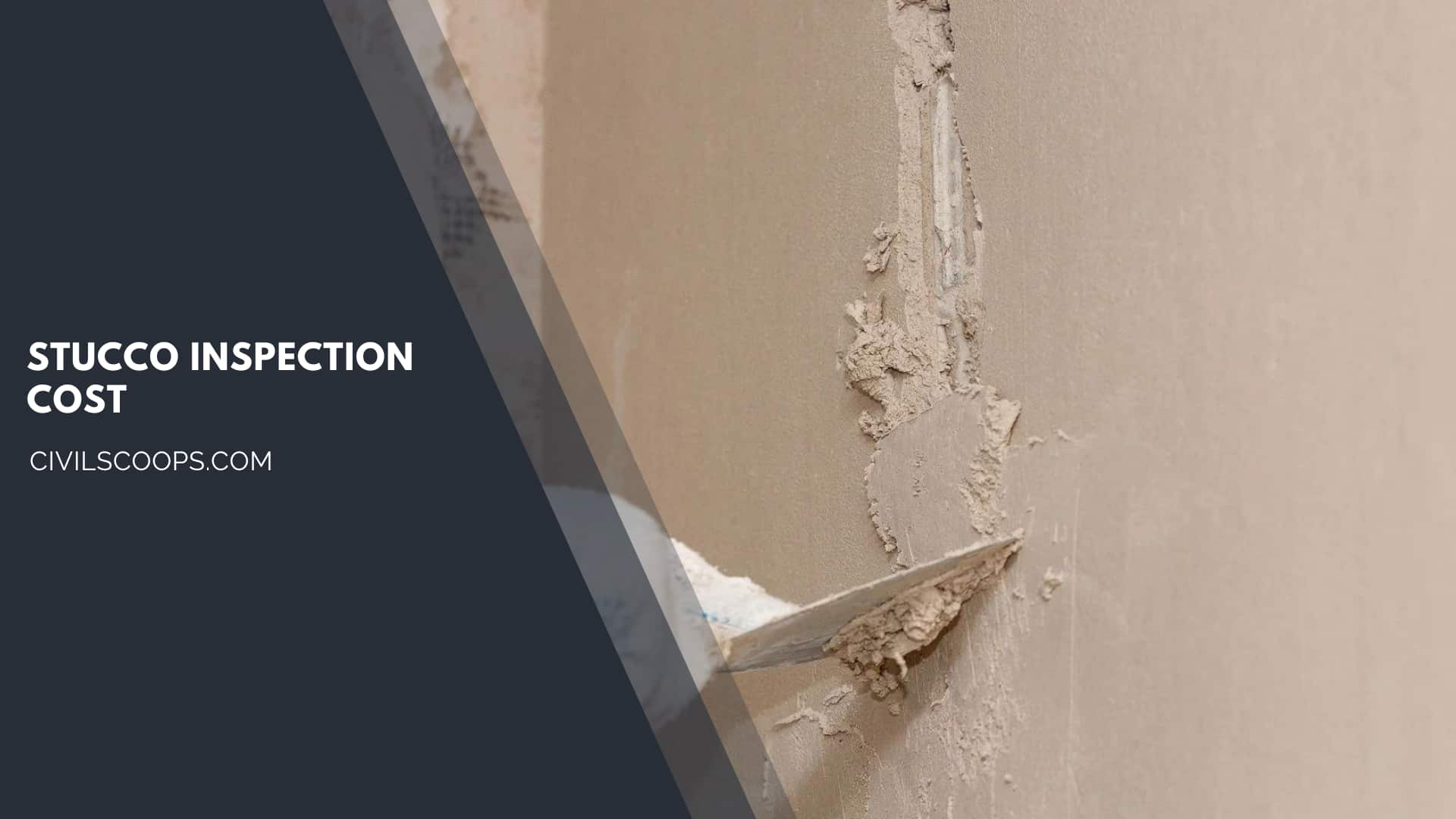
The actual cost of a stucco inspection depends upon several factors such as,
- square footage of the property
- location
- ease of access.
A stucco testing company can be confirming the actual costs for your property before booking.
More reading and more time to inspect is required for A larger building with more surface area.
Useful Article for You
- How Wide Is a Cinder Block
- How Much Is a Coffered Ceiling
- How to Make Mortar
- How Long Does Hempcrete Last
- How to Use a Hand Sight Level
- How to Construction
- How to Build a Lean to Roof
- How Are Tunnels Built
- How to Layout a Building
- How Wide Is a Car Parking Space
- How Do Shear Walls Work
- How to Measure Concrete Slump
- How Are Bridge Foundations Built
- How to Use Washers with Screws
- How Dense Is Sand
- How High Is a Window from the Floor
- How to Fix Spalling Concrete Foundation
- How Does a Beam Bridge Work
- How Do They Pour Concrete Under Water
- How Does a Sewer System Work
- How High Are Countertops
- How to Seal Brick Wall Interior
- How to Resurface Cement
- How to Use Portland Cement
- How Is Plaster Made
- How to Find Fineness Modulus
- How to Get Rid of Spray Paint Smell on Metal
- How Many Types of Slope Are There
- How Big Is a Stair Landing
- How Does Rebar Help Concrete
- How to Identify a Load Bearing Wall
- How to Get Paint Off Concrete Without Chemicals
- How to Fix Water Damaged Drywall
- How Much to Get Septic Pumped
- How to Cut a Nail or Screw
- How Long Does Wet Concrete Take to Dry
- How Is Varnish Made
- How Does Ejector Pump Work
Pros and Cons of Stucco
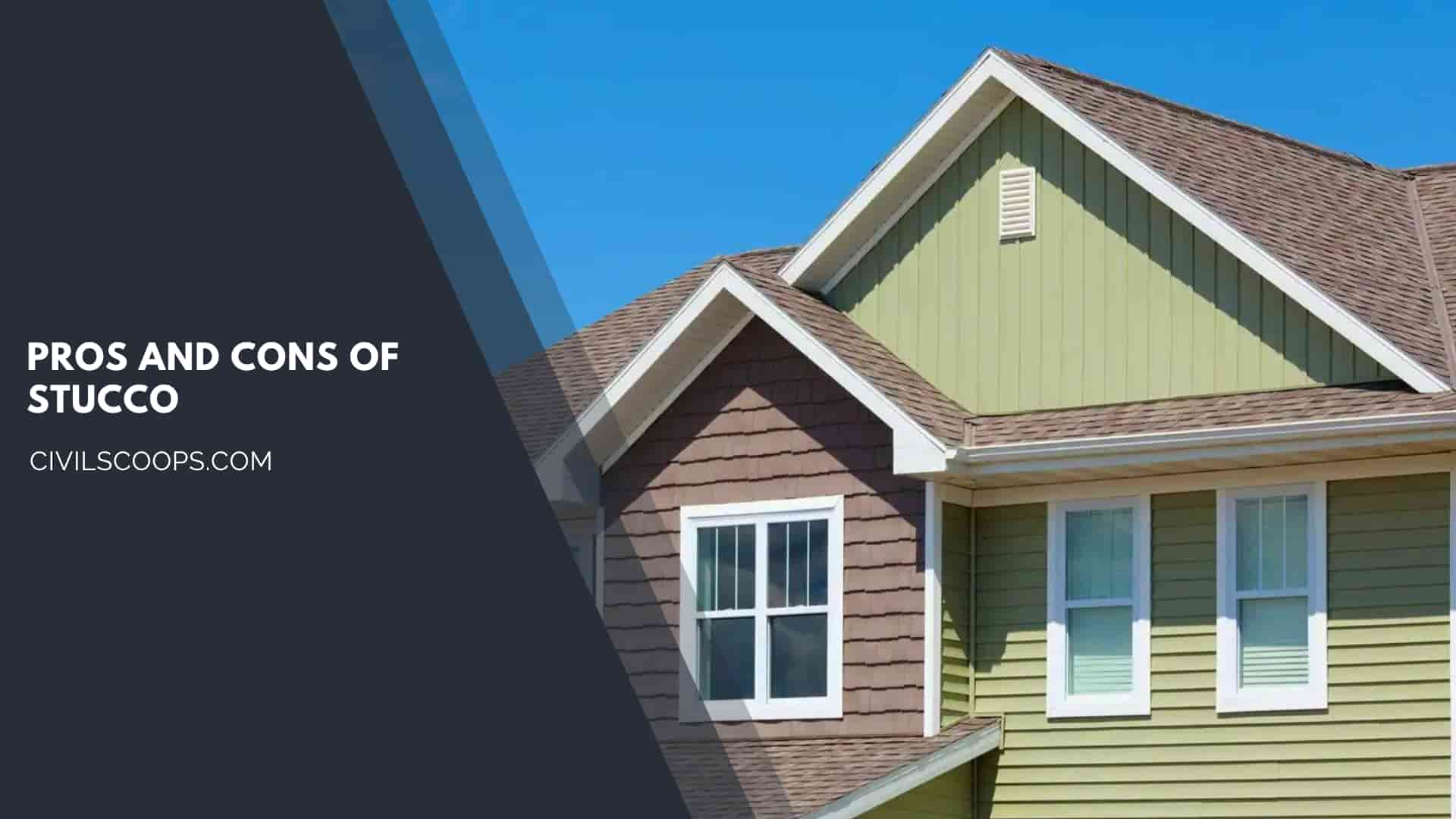
Following are the different pros and cons of Stucco.
Pros
1. Stucco Is Durable
- Stucco is made up of cement, sand, and water mixture, so it stays rigid strong winds.
- Stucco is fire resistant, making it one of the ideal building materials.
2. Stucco Is Aesthetically Appealing
- Stucco aesthetically transforms a building appearance.
- With the test of time, The material achieves a look that stands. Stucco buildings have been around since ancient times.
3. It’s Fire-Resistant
- Buildings over the recent past due to arid climates
- Including wood or brick, Stucco can be applied over any surface.
- It can add at least a one-hour fire rating to an exterior wall.
4. It Requires Less Energy to Cool a Home
- Stucco’s mixture of cement, sand, and lime is applied in many layers; this essentially creates a concrete shield around a building.
- To keep a home cool during the temperatures of the summer months requires less energy.
5. It’s Easy to Maintain
- How long your Stucco lasts and how good it looks will depend on a few things, including how well it has been maintained.
- To keep clean and strong, Stucco is preferably easy
- With an elastomeric coating, Any hairline cracks can be quickly and easily fixed.
6. It’s Long-Lasting
- More than 50 years, if Stucco applied properly, it can easily last
- It’s also resistant to mold, including rot, mildew.
- It’s standing up well to weather, wind, and debris.
7. It’s Versatile
- It appears lots of options in the color, texture, and type of application.
- It can be smooth, raked, or any other texture, course swirled.
8. It Can Reduce Sound Transmission
- If you live in a markets area or congested area their lots of vehicle traffic, and plenty of neighbors have the major benefit of a sound reduction.
- Stucco must be quieted outside noise.
9. It Can Be Quickly Installed
- for the installation of Stucco, many coats need to be applied, but Stucco can be completely installed in a day.
- It’s also one of those materials that superficially never goes out of style.
Cons
1. Stucco Is Absorbent
- Stucco is porous; like vinyl and other siding materials, it absorbs moisture.
- The elements absorb moisture, and as a result, the home must develop unsightly dark spots.
- It may even grow mold, which is very noticeable on your home’s exterior. This mold can develop underneath the Stucco.
2. It Can Be Expensive
- The biggest disadvantage of Stucco is it’s very expensive.
- The price tag compared to other materials is High up-front, i.e., such as vinyl or cement fiber siding.
3. It Can Become Oversaturated
- A certain amount of moisture and expansion, Stucco can only tolerate.
- It isn’t as good as vinyl siding or brick at keeping water out of the exterior walls throughout heavy rain periods.
4. It Can Be Brittle
- Stucco was not the best option in earthquake-prone areas,
- If the ground tends to shift, Stucco
- can easily develop hairline cracks or, worse
5. It Tends to Show Dirt Stains More Than Other Types of Siding Materials
- Stucco is particularly true with a very smooth finish.
- More than other types of siding materials, Stucco tends to show dirt stains.
Synthetic Stucco Pros and Cons
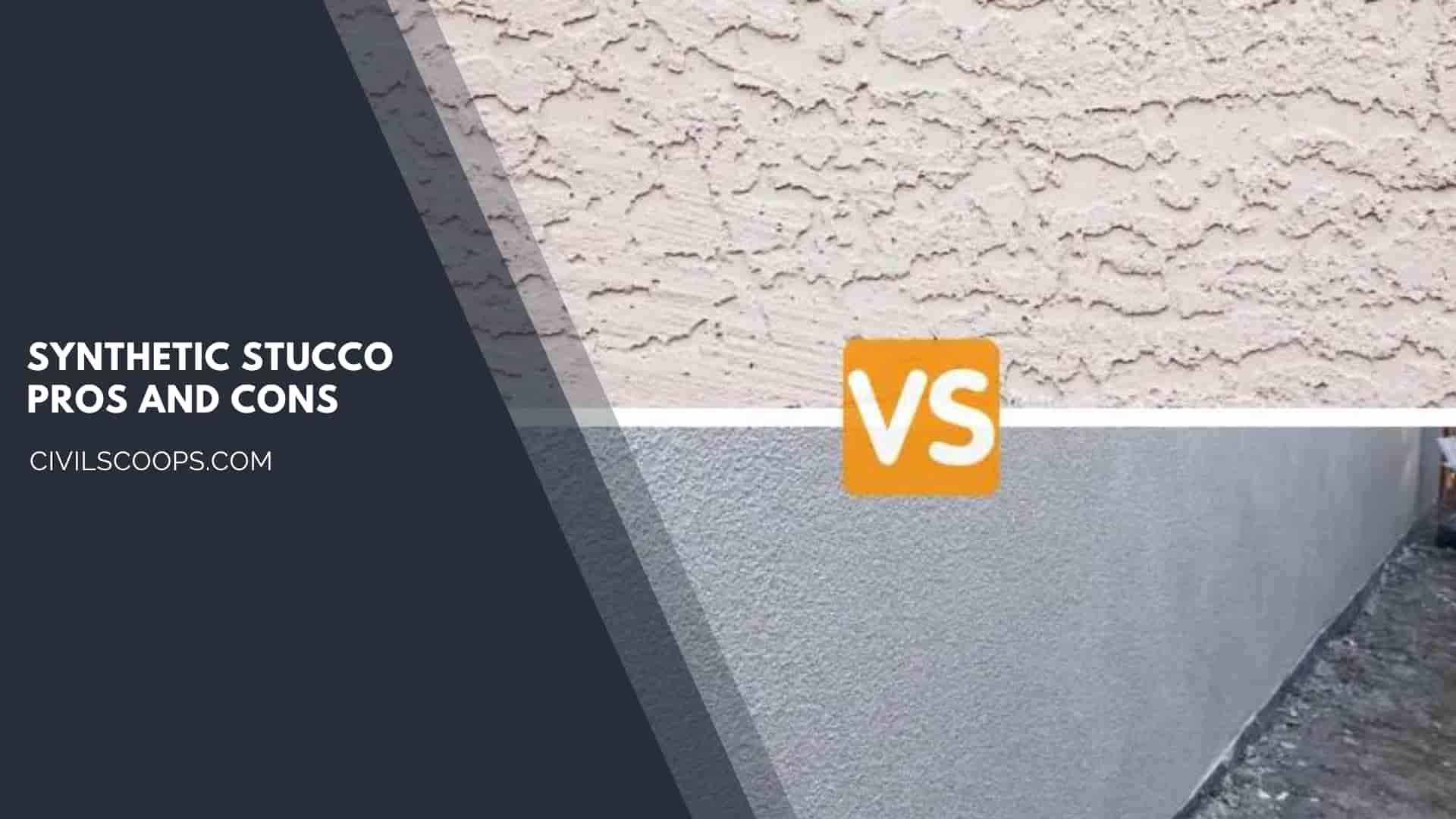
Following are the various Synthetic Stucco (EIFS) pros and cons
Synthetic Stucco (EIFS) Pros
- Synthetic Stucco is an excellent insulating value, which increases home energy efficiency.
- Synthetic Stucco provides a virtually waterproof seal.
- Synthetic Stucco must be a versatile product that is easily formed into any shape.
- Synthetic Stucco is available in different colors and textures.
- Synthetic Stucco is durable; therefore, surface scratch is not prominent.
- Other materials such as traditional Stucco or brick an EIFS can be finished in various ways and made more different.
- The flexibility of EIFS makes it less susceptible to damage from environmental changes.
- The multiple layers of the synthetic Stucco include fiberglass; synthetic Stucco is more durable than traditional.
- Synthetic Stucco provides enhanced protection to the structure.
Synthetic Stucco (EIFS) Cons
- In synthetic Stucco, more challenging proper installation.
- Improper installation of synthetic Stucco can fail to protect your home.
- It exposes to water damage and other moisture-related problems.
- When Stucco is installed too quickly with unspecialized workers, there is a significant risk of damage to your home.
Stucco Application Systems
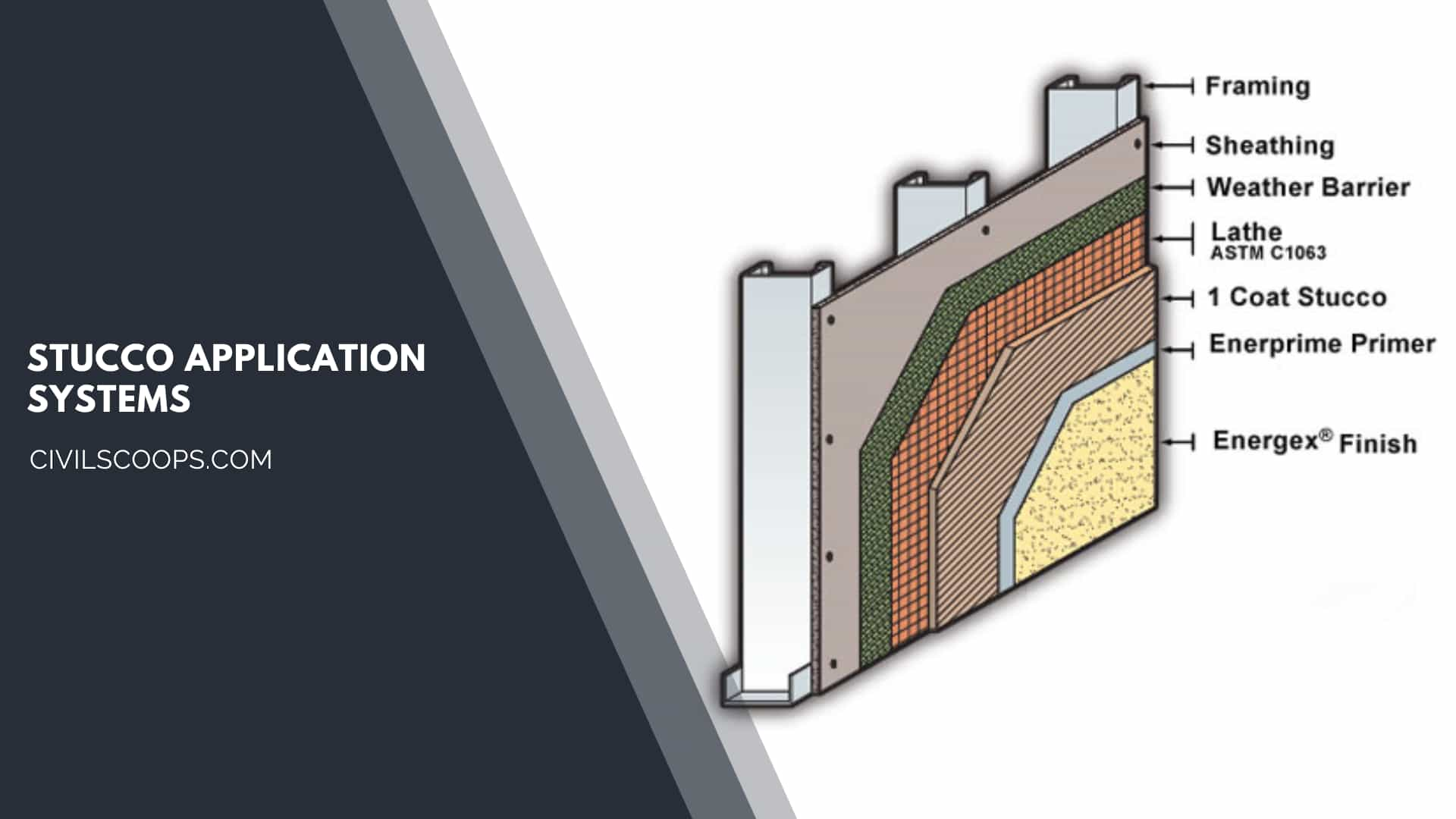
1. Coat Stucco Hard Coat System
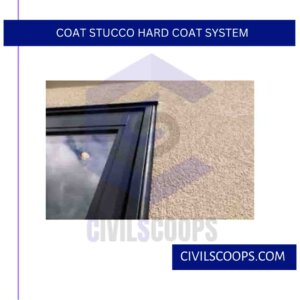
- 1- coat stucco system is sometimes known as a 2-coat system
- 1- coat stucco consists of a cement base.
- 1- coat stucco is also applied foam.
2. Coat Stucco Hard Coat System
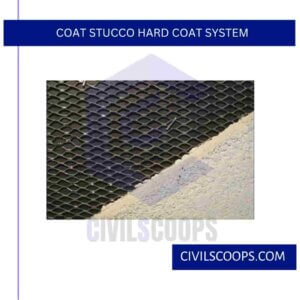
- The 3-coat stucco system consists of a water-resistant barrier.
- This barrier is made from asphalt-infused paper, other layers of wire, a scratch and brown layer, and a finish coat or primer.
- In 3- coat stucco system consists of a cement base coat. usually, about 7/8″Cement base coat is used
3. EIFS Stucco Systems
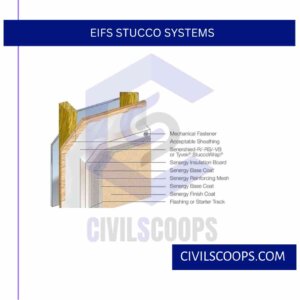
- EIFS symbolizes “Exterior Insulation and Finish System.”
- EIFS does not require hard coats and uses thinner layers.
- Another kind of EIFS would be with an added water management layer that is referred to as moisture or air barrier.
Conclusion
Stucco has more benefits of various types, finish, and application systems. The different types of Stucco and finishes are available in the market. It should be able to choose which kind of Stucco bests your home. Whatever kind of style you want, there’s Stucco for that.
[su_box title=”FAQ” style=”default” box_color=”#333333″ title_color=”#FFFFFF” radius=”3″ class=”” id=””]
What Is Stucco?
Stucco or render is a construction material made of aggregates, a binder, and water. Stucco is applied wet and hardens to a very dense solid. It is used as a decorative coating for walls and ceilings, exterior walls, and as a sculptural and artistic material in architecture.
What Is Stucco Made Of?
Stucco is a cement-type mixture made of Portland cement, lime, sand and water. It is a thin finish coat that goes on the outermost layer of residential and commercial constructions. Modern stucco has polymers and other agents for increased flexibility that improves its resilience.
Is Stucco Waterproof?
Since stucco is a masonry product, it is often believed to be waterproof already. However, this isn’t totally true — stucco is indeed permeable and will let some water through.
Is Stucco Expensive?
Expect to pay between $6 and $9 per square foot to add stucco to your home. This includes labor and materials. The labor portion, if you decide to hire the job out rather than DIY, will set you back between $2 and $3 per square foot. For the stucco material itself, the cost ranges from about $5 to $6 per square foot.
What Is Stucco Used For?
It is often used as a finish on houses and buildings and has a natural, textured style. With different colors and uses, you can use stucco in the interior or exterior of a building to add an extra design element.
What Is Synthetic Stucco?
Synthetic stucco is made up of a foam plastic insulation board attached adhesively or mechanically to an exterior wall surface or substrate, such as plywood, polysterene, a water-resistant base coat comprised of polymer-based or an acrylic cement material reinformed with fiberglass mesh, and a top coat finish to give.
How Is Stucco Made?
Traditional stucco is made of lime, sand, and water. Modern stucco is made of Portland cement, sand, and water. Lime is added to increase the permeability and workability of modern stucco. Sometimes additives such as acrylics and glass fibers are added to improve the structural properties of the stucco.
Is Stucco Durable?
Long-lasting:
Stucco can well last over 50 years with proper maintenance. It can expand and contract with the weather to sustain critical damage, unlike other siding options. It’s also resistant to mold, rot and mildew.
Different Types of Stucco
- Traditional Stucco. Traditional stucco is comprised of sand, lime, and water.
- Synthetic Stucco. Unlike traditional stucco, synthetics does not use cement and lime.
- Float or Sand.
- Dash.
- Lace and Skip.
What Does Stucco Look Like?
Stucco finishes can be smooth and professional, rough and textured, or sandy and coarse. Stucco is a versatile material. Its application to a home can vary greatly depending on your home’s construction, your preference for material and style, and the environment around your house.
Types of Stucco Finishes
- Sand (Float) Stucco Finish.
- Cat (California) Stucco Finish.
- Dash (roughcast, knockdown finish, fine dash finish, pebble) Stucco Finish.
- Santa Barbara (Santa Barbara Mission) Stucco Finish.
- Worm (putz and swirl) Stucco Finish.
What Is the Cost of Stucco Per Square Foot?
On average, stucco installation can range from $6 to $9 per square foot for basic materials and labor. This includes the application of three coats of stucco (scratch coat, brown coat, and finish coat) over a wire mesh or other supporting material.
Stucco Texture Types
Architects can choose from numerous stucco finish applications techniques to give every building or home a unique exterior, including: Sand, Cat, Dash, Santa Barbara, Worm, Lace, Skip, English, Smooth.
How to Stucco a Ceiling?
And just like with drywall mud, you can apply stucco on the ceiling directly on top of the drywall with a flat metal trowel if you are only doing a single layer that is no more than 1/4 inch thick. Anything more than that can potentially peel the drywall away under the weight of the stucco.
Stucco Maintenance
Stucco should be inspected annually for holes, significant cracks, or separations. If stucco repairs are needed, it is important to have the repairs completed in a timely fashion to prevent damage to your home. A mild cleaner and water can be used to remove most stains.
What Is the Difference Between Traditional and Synthetic Stucco?
Synthetic Stucco Performance. Traditional stucco is more durable, fire resistant, and has greater longevity, being able to last up to 50 years with low maintenance. Traditional stucco is also very porous and dries out quickly, while synthetic stucco is not and can have water damage issues if not installed properly.
What to Use to Fill Holes in Stucco?
TIP: For small holes, fill the damaged area with paintable high quality caulking material before continuing with the stucco patch. Before the last coat of patching material dries, remove any excess material using a clean rubber float in a circular sweeping motion. Blend the repaired area into the existing texture.
What Is Synthetic Stucco Made Of?
EIFS stucco refers to Exterior Insulation and Finish System, also called synthetic stucco. It’s made of acrylic and applied in several 1/8” layers over polystyrene or some other insulation board on top of plywood or some other exterior sheathing.
What Is Synthetic Stucco Siding?
Synthetic stucco siding, also known as Exterior Insulation and Finish System (EIFS), is a type of cladding used on the exterior of buildings. It is designed to mimic the appearance of traditional stucco while providing additional insulation and moisture resistance.
What Materials Are Needed for Stucco?
Modern stucco is used as an exterior cement plaster wall covering. It is usually a mix of sand, Portland cement, lime and water, but may also consist of a proprietary mix of additives including fibers and synthetic acrylics that add strength and flexibility.
Stucco Inspection Cost
Depending on the size of the home and amount of stucco, an average cost will likely be between $600 – $1,200. Keep in mind that costs vary by inspector and are influenced by service area, square footage, accessibility and other factors. Contact an individual inspector for their fees.
Hard Coat Stucco
Hardcoat Stucco basics
Hardcoat stucco is an ancient building material that was historically applied over masonry buildings and was often referred to as plaster. Modern stucco is made of Portland cement, lime and sand and is often installed over wood-framed buildings in North American residential construction.
Stucco Portland Cement
Portland cement plaster, or stucco, as it is often called, is an excellent exterior wall material if properly installed. It is strong, durable, waterproof (in the common sense of the term), and can be furnished in a wide range of colors and textures; it is an excellent material to be applied on a wood-frame building.
How to Smooth Out Interior Stucco Walls?
Steps for Converting Rough Stucco into Smooth Stucco
- Smooth the Surface: Using a high grit sanding paper, sand down the rough stucco to as smooth as possible.
- Wash off the Surface: Wash off the surface of the stucco wall using a hosepipe.
- Apply the Primer.
- Apply the Smoothing Filler.
- Sand the Wall.
Stucco Water Damage
Most water damage to stucco is first observed as staining. Since stucco turns darker when wet staining can remain after stucco dries. Staining can be seen as either white hazy streaks or as dark blotches in the color.
How to Apply Stucco?
Step 1: Apply bonding agent or stucco wrap.
Step 2: Apply scratch coat.
Step 3: Apply brown or leveling layer.
Step 4: Apply finish coat.
Step 5: Paint.
How to Stucco a Wall?
When working with an existing masonry or brick wall, you’re going to first need to use some fresh mortar to repair any cracks that exist, then wash the wall with a power washer (or use a trisodium phosphate-water mixture and scrub it). The wall should be thoroughly wet before you apply the first coat of stucco.
How to Do Stucco?
Step 1: Lath (Water proof)
Step 2: Inspection of Lath.
Step 3: Scratch coat.
Step 4: Cure time.
Step 5: Brown coat.
Step 6: Cure time.
How to Install Stucco?
- Prepare Surface: Clean, repair, and apply a moisture barrier.
- Install Metal Lath: Secure it to the surface.
- Mix Stucco: Combine stucco mix with water for a uniform consistency.
- Apply Scratch Coat: 3/8-inch thick layer, create scratches, and let cure (48 hrs).
How to Mix Stucco?
The stucco scratch coat mix is a simple recipe that really consists of sand, cement and water. There are other formulas that you can use but in its simplest form it is merely a 3 to 1 ratio of sand to cement.
How Do You Apply Stucco?
- Prepare Surface: Clean, repair, and dampen it.
- Mix Stucco: Follow manufacturer’s instructions.
- Apply Scratch Coat: 3/8″ thick, create texture, let cure (48 hrs).
- Apply Brown Coat: 3/8″ thick, texture if desired, let cure (48 hrs).
[/su_box]
[su_note note_color=”#F2F2F2 ” text_color=”#333333″ radius=”3″ class=”” id=””]
Like this post? Share it with your friends!
Suggested Read –
- All About Wall Putty
- Definition Efflorescence
- What Is Micro Concrete
- Live Load Vs Dead Load
- Different Types of Couches for Home
[/su_note]
Originally posted 2023-10-10 12:06:23.
